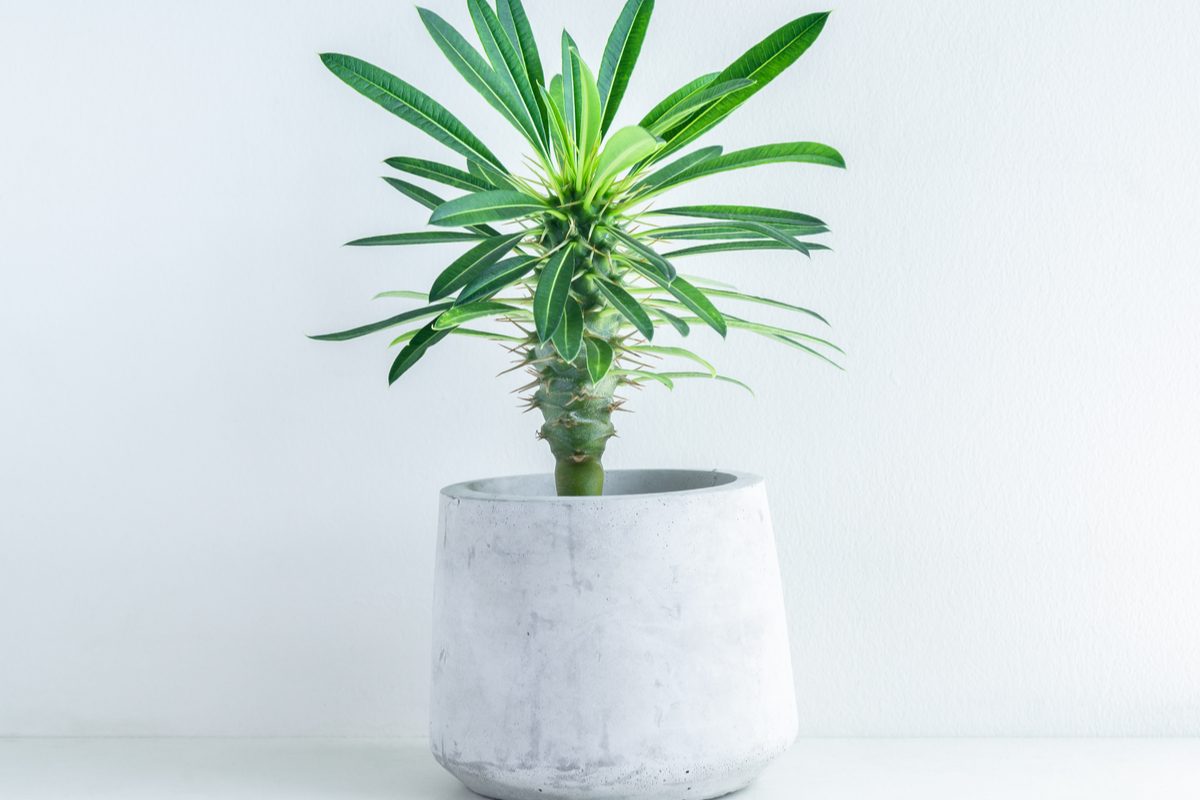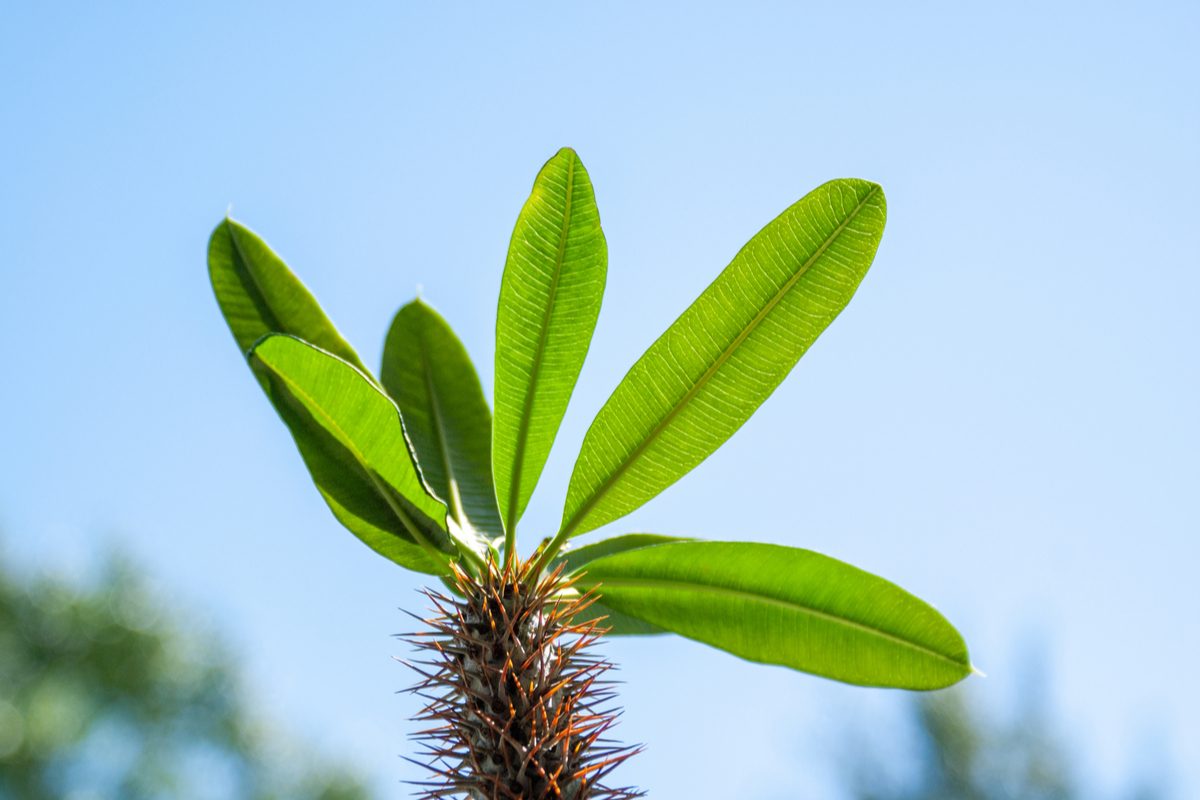Fun fact: Madagascar palms, which are native to Madagascar, aren’t actually palms. They’re members of the succulent family and got their name because their look somewhat resembles that of a palm. In warmer regions, the plant is used as a beautiful outdoor landscape accent. In cooler regions (especially during the colder months), the Madagascar palm makes for a fabulous indoor houseplant.

How tall does a Madagascar palm get?
Madagascar palms can grow up to 15 feet if planted outdoors or 4 to 6 feet if grown inside in a pot. The leaves themselves can grow up to 1 foot long and 14 inches wide, and it could take up to 10 years for a Madagascar palm to fully mature. Their trunks are long and spindly, covered with tough spines, and hardly ever branch out. Most, if not all, of their leaves are grown at the tops of the plants. And they may even occasionally produce red, yellow, or pink flowers during the colder months.
As with most plants, the Madagascar palm won’t outgrow the pot it’s in. It would be lovely to have it up to 6 feet in an apartment or home space, but you would likely never want it to grow up to 15 feet indoors. No matter the length, it will be a beautiful feature to any indoor houseplant collection.
How do you care for a Madagascar palm?
The basics of Madagascar palm care are quite simple. Since it’s a member of the succulent family, you’ll want to consider the type of care that you’d give to a succulent when tending to a Madagascar palm. It goes dormant in the winter, so it doesn’t need too much water in the colder seasons. Similarly, you’ll want to apply the soak-and-dry method — that is to say, make sure the Madagascar palm’s soil is completely dry between watering, then soak the soil until it starts draining out the bottom.
Because they go dormant in the colder months, they will lose a few leaves. But don’t worry, this is completely normal! Your watering will also be decreased during the dormancy period. Because of those two things, you’ll want to fertilize your Madagascar palm at the beginning of the spring (then again at the beginning of the summer) to help encourage new growth where the leaves had been lost. A happy, thriving Madagascar palm can grow up to 12 inches a year and produce beautiful blooms.

Light and temperature requirements
Madagascar palms love lots of light; if you intend to grow them outside, be sure to put them in a place where they’ll get a lot of direct sun. If grown indoors, you’ll want to place them near some sunny windows or doors — preferably south-facing with a lot of light, if possible! The temperature is where it could get a bit tricky.
You’ll never want to grow the Madagascar palm outdoors if you live in a climate that drops below 55 degrees. If you do, you’re better off growing the plant in a pot where you can bring it indoors in the colder months or grow it inside year-round. Madagascar palms that are indoors should also never be kept in a room that’s below 55 degrees. Where possible, keep them near where the heat comes out to ensure the plant is as warm as possible!
Can you propagate the Madagascar palm?
Yes! A well-cared-for Madagascar palm is able to propagated. There are actually two ways to propagate the Madagascar palm — from cuttings and from seeds, though the method from seeds is rather difficult. If you choose to grow a new Madagascar palm with a seed taken from the plant, soak the seed in warm water overnight before planting it. Keep the pot at room temperature once it’s planted.
If you’d rather propagate from the offsets of the Madagascar palm, you can find them near the trunk. They usually grow just under the leaves. You’ll want to cleanly separate it from the parent plant, then set it aside to dry out for up to eight days. From there, plant them in containers that have good drainage and keep them warm until the roots take hold.
Are Madagascar palms poisonous?
Yes, every part of the Madagascar palm contains a sap that’s poisonous. The good news is that, as far as pet-chewing goes, there’s no risk of them gnawing on the trunk due to the large spikes; however, because the leaves don’t have this kind of deterrent, a pet (or a small child) may attempt to take one off and have it as a snack. If this is a risk in your household, you may want to put the plant in a place where the pets and children don’t have easy access to it.
Other than that, Madagascar palms are quite simple houseplants that will add a beautiful touch to your lawn or decor.


